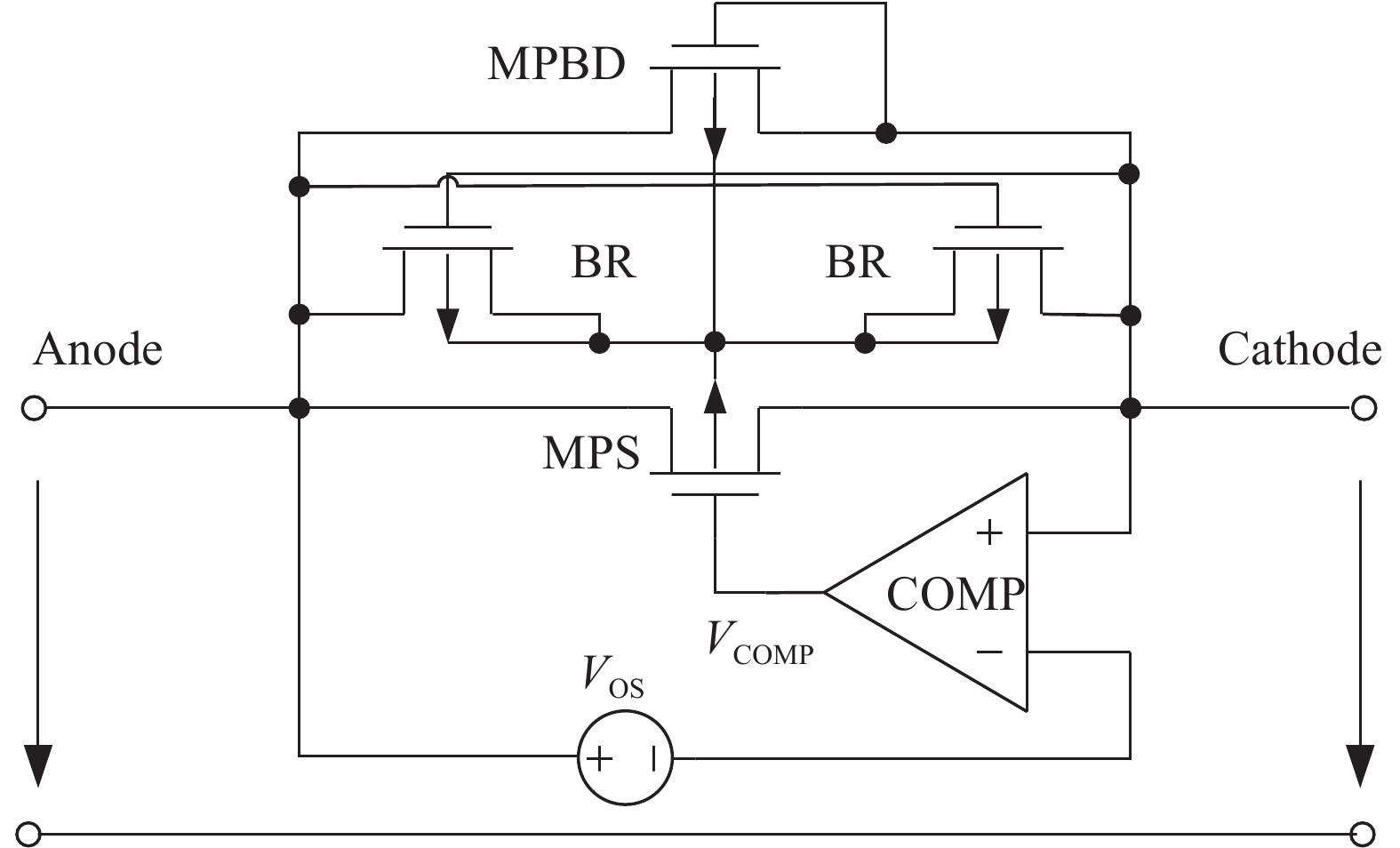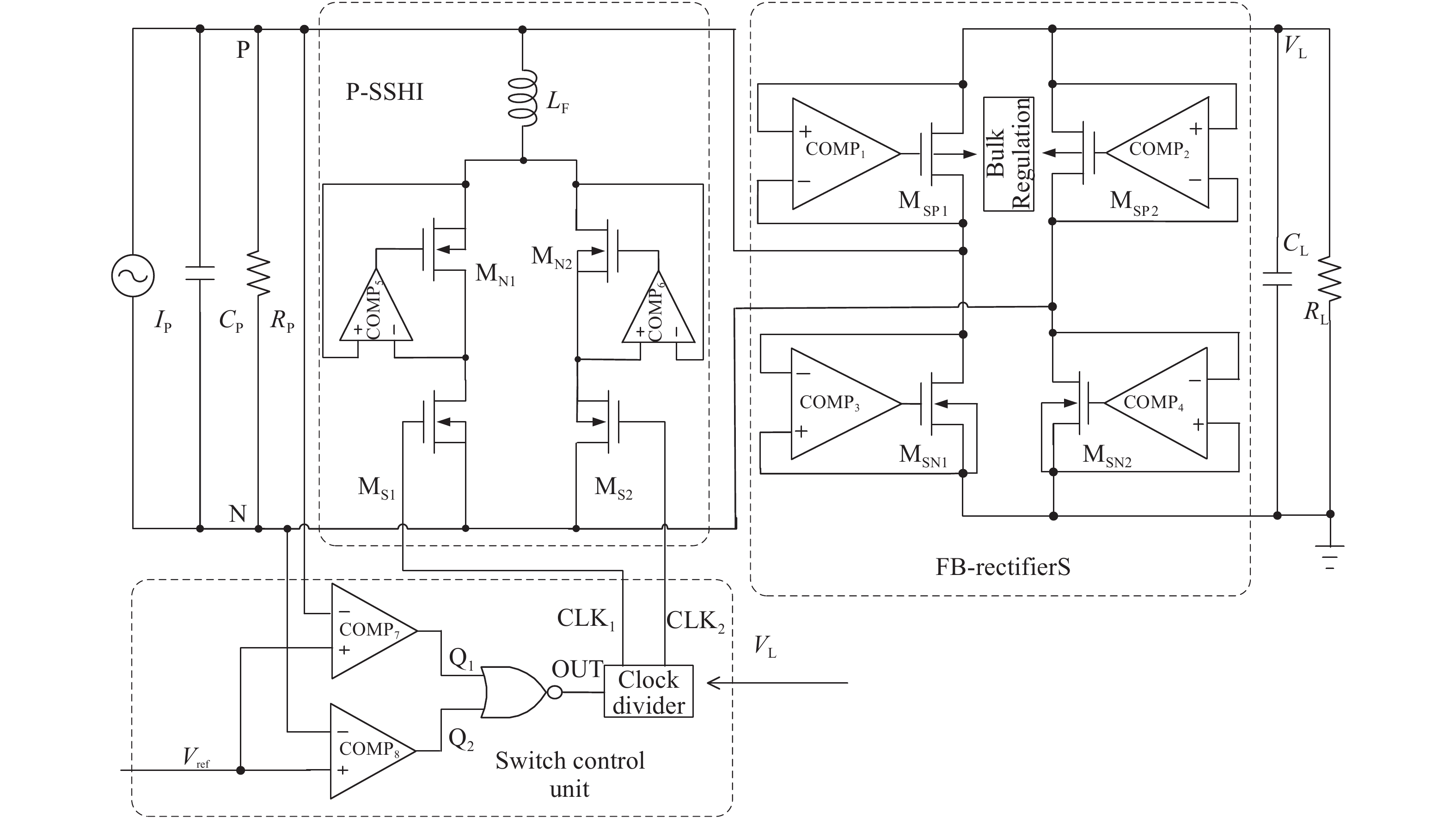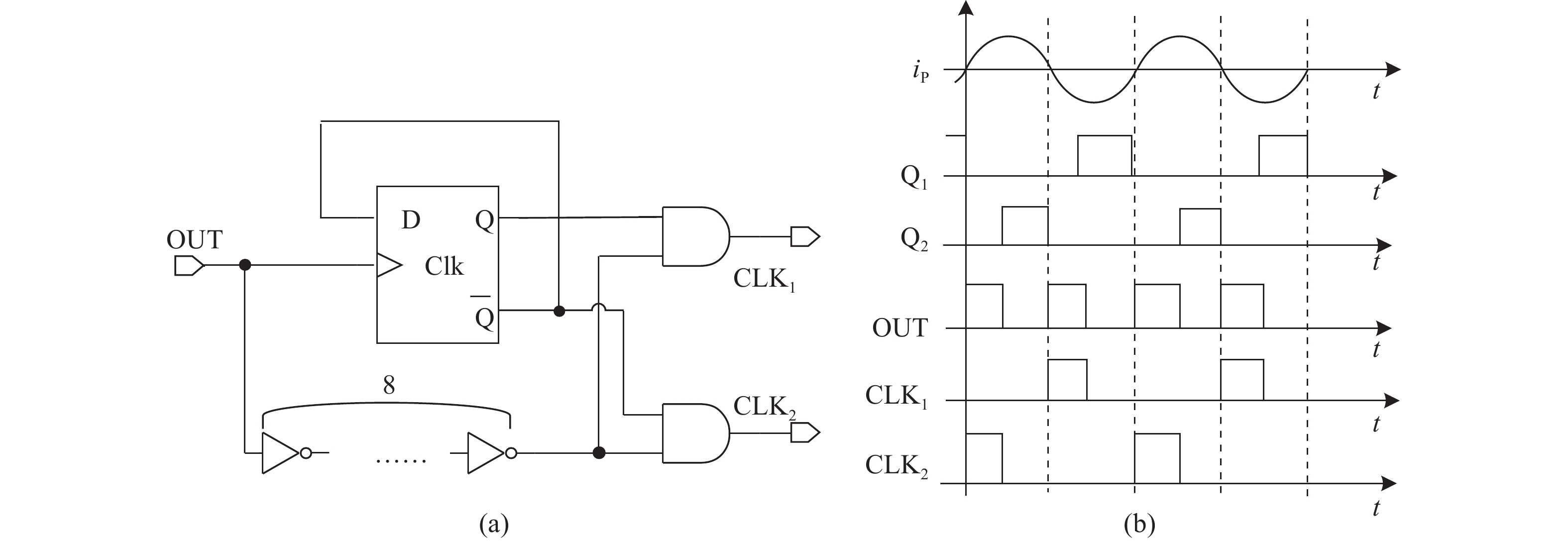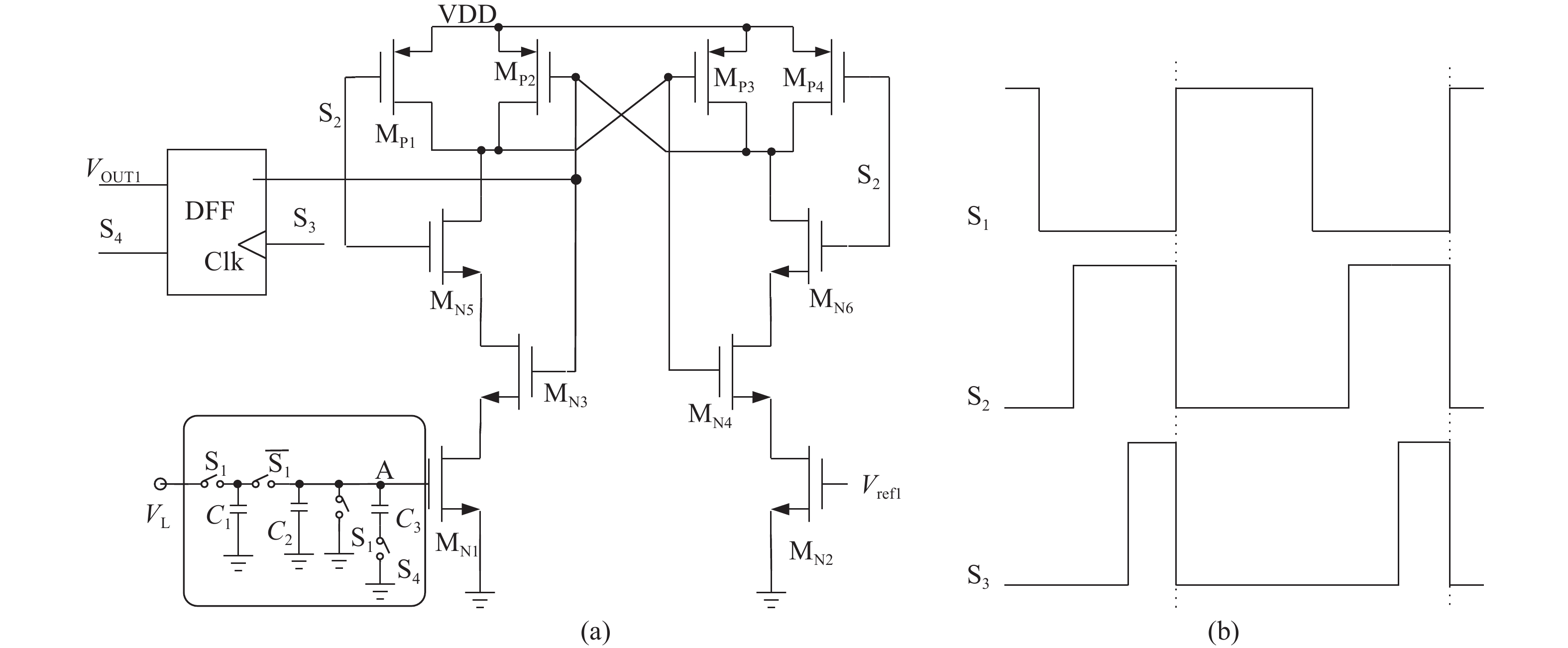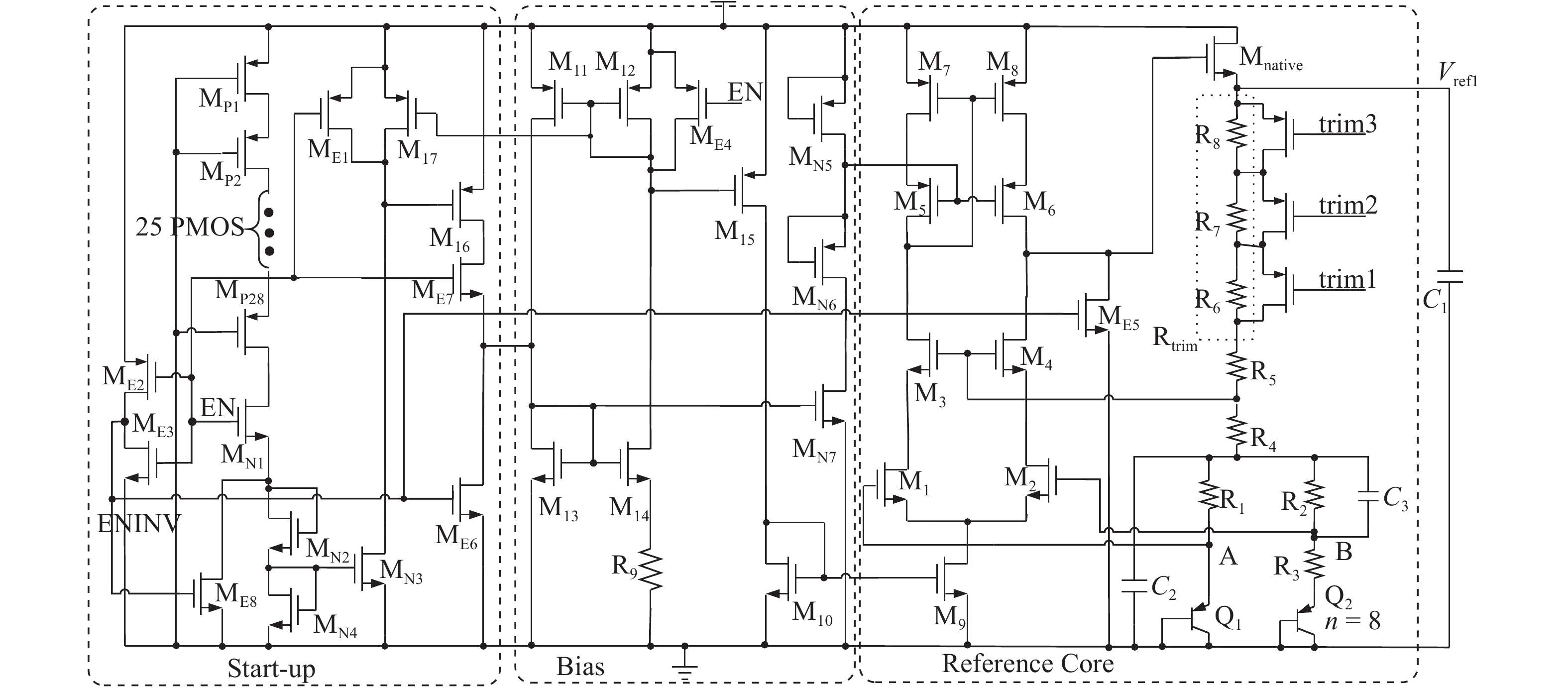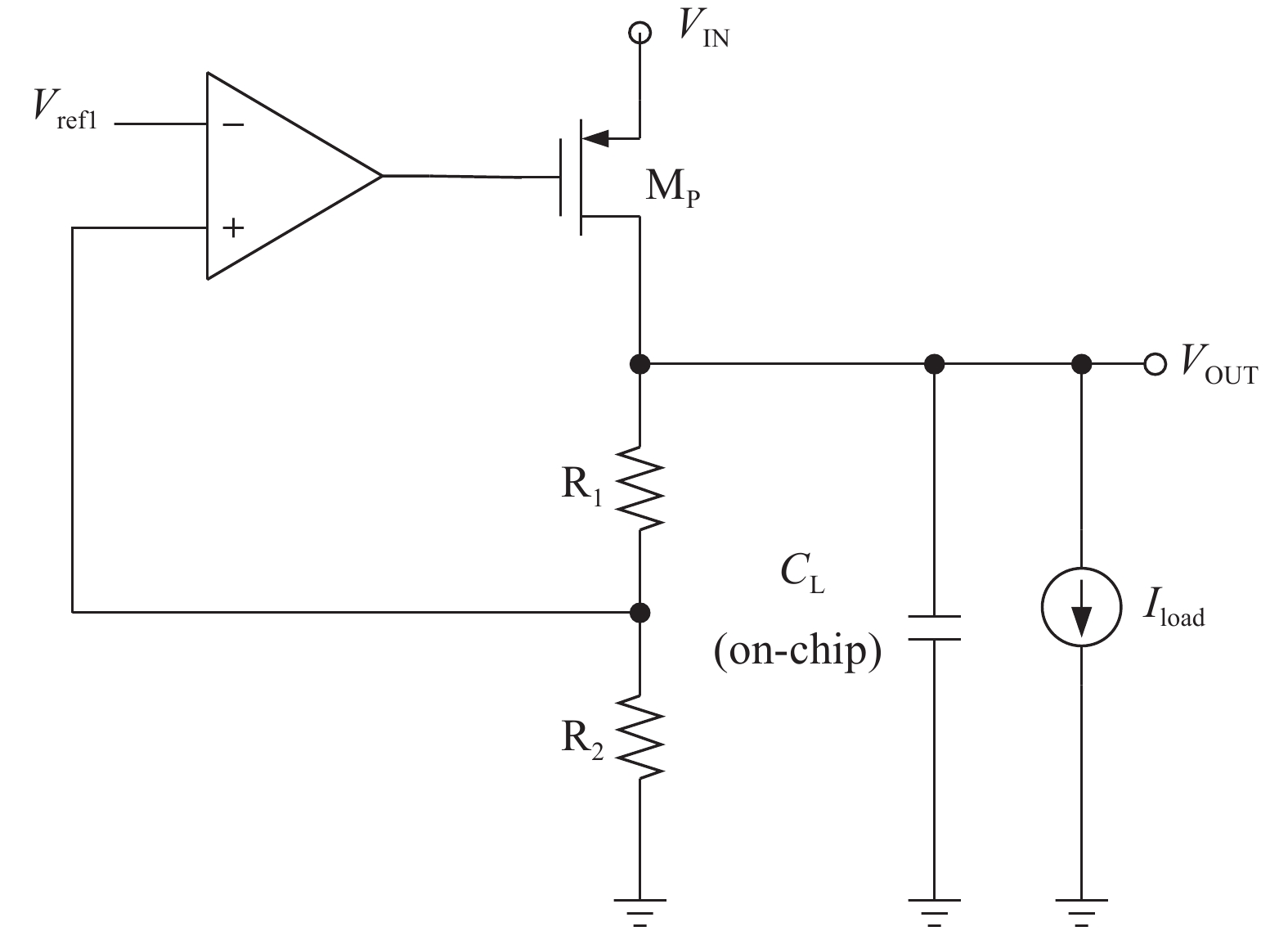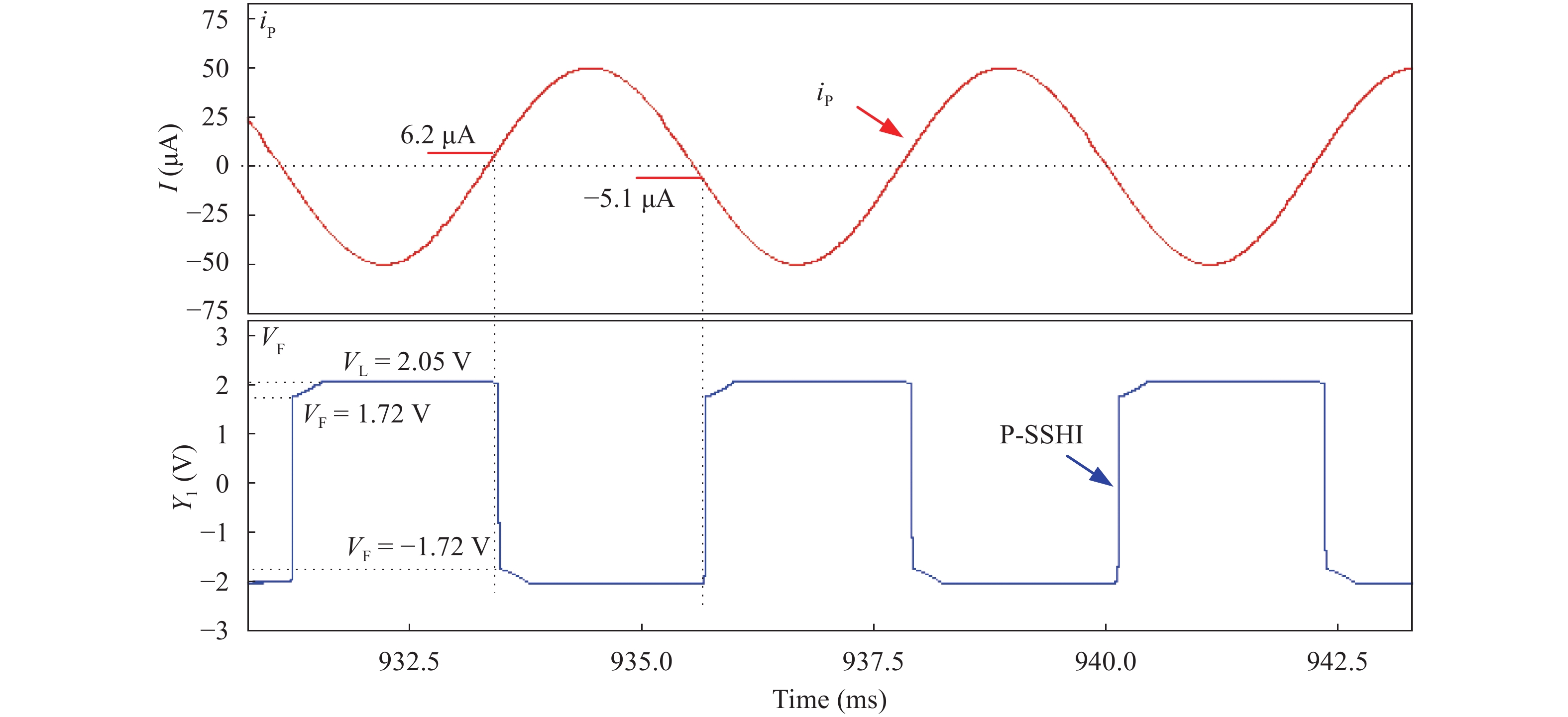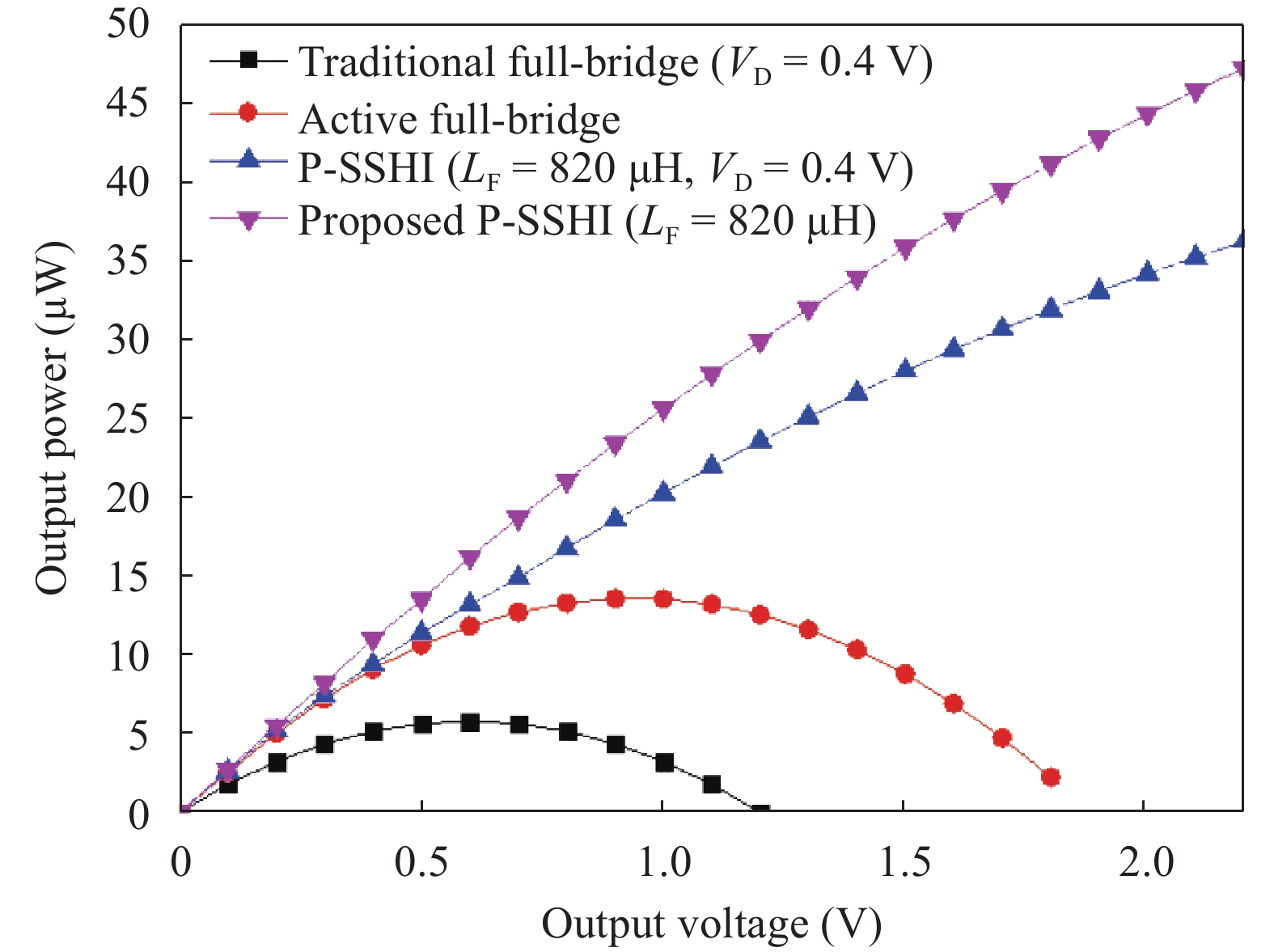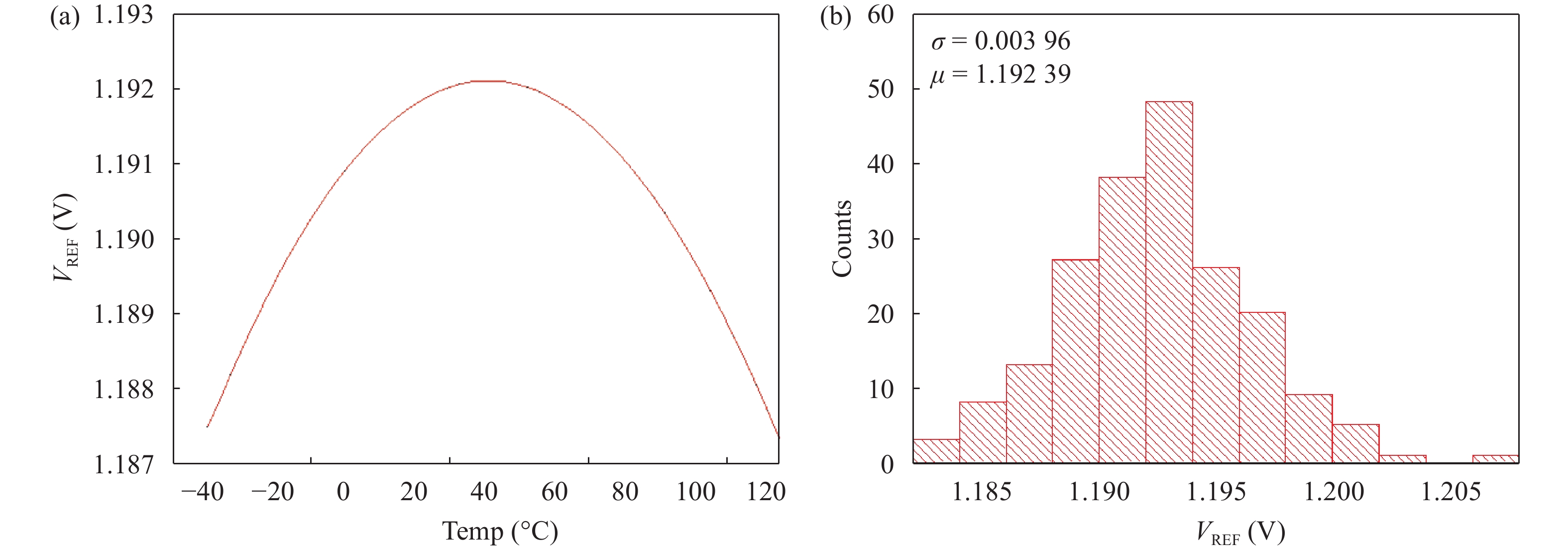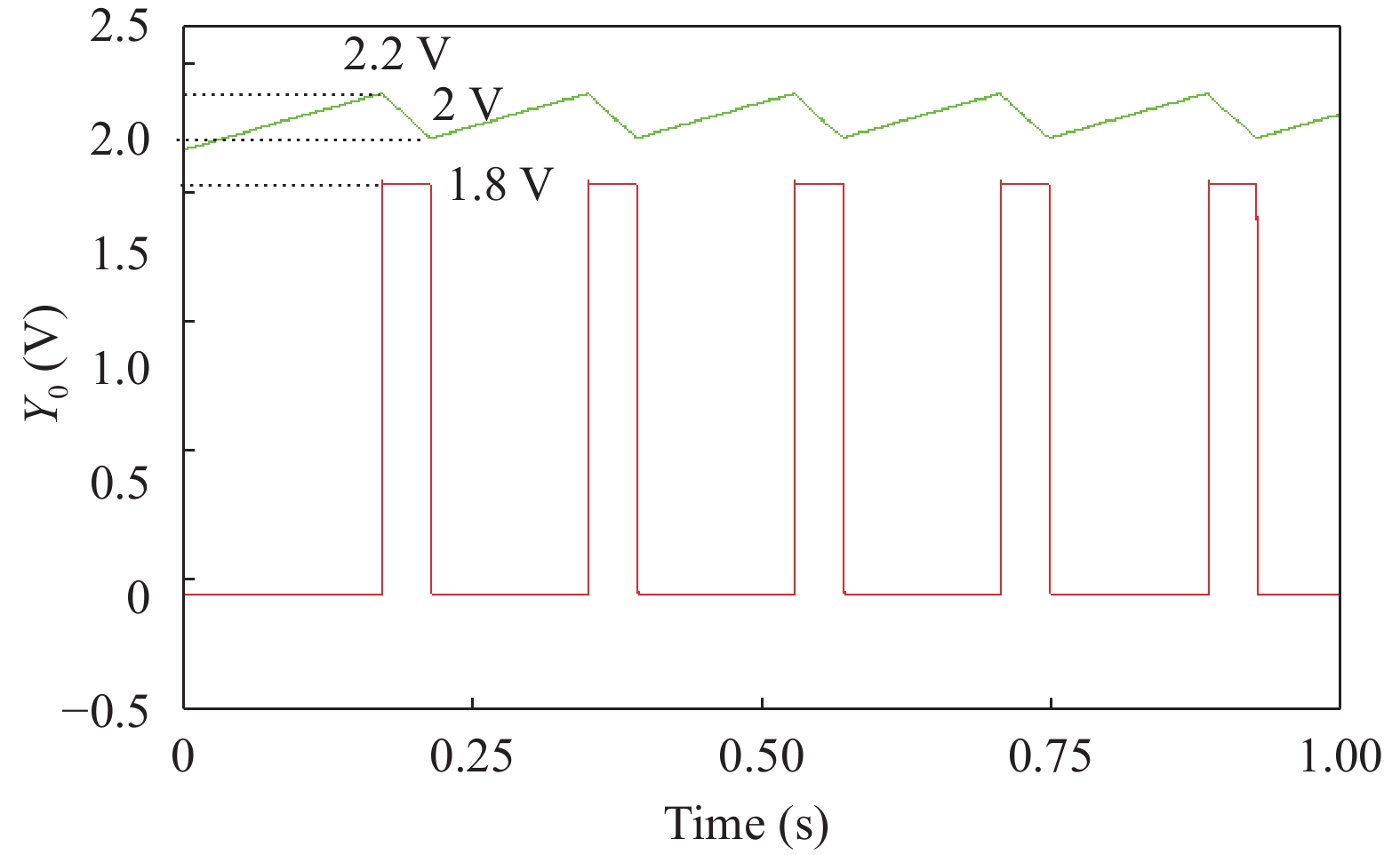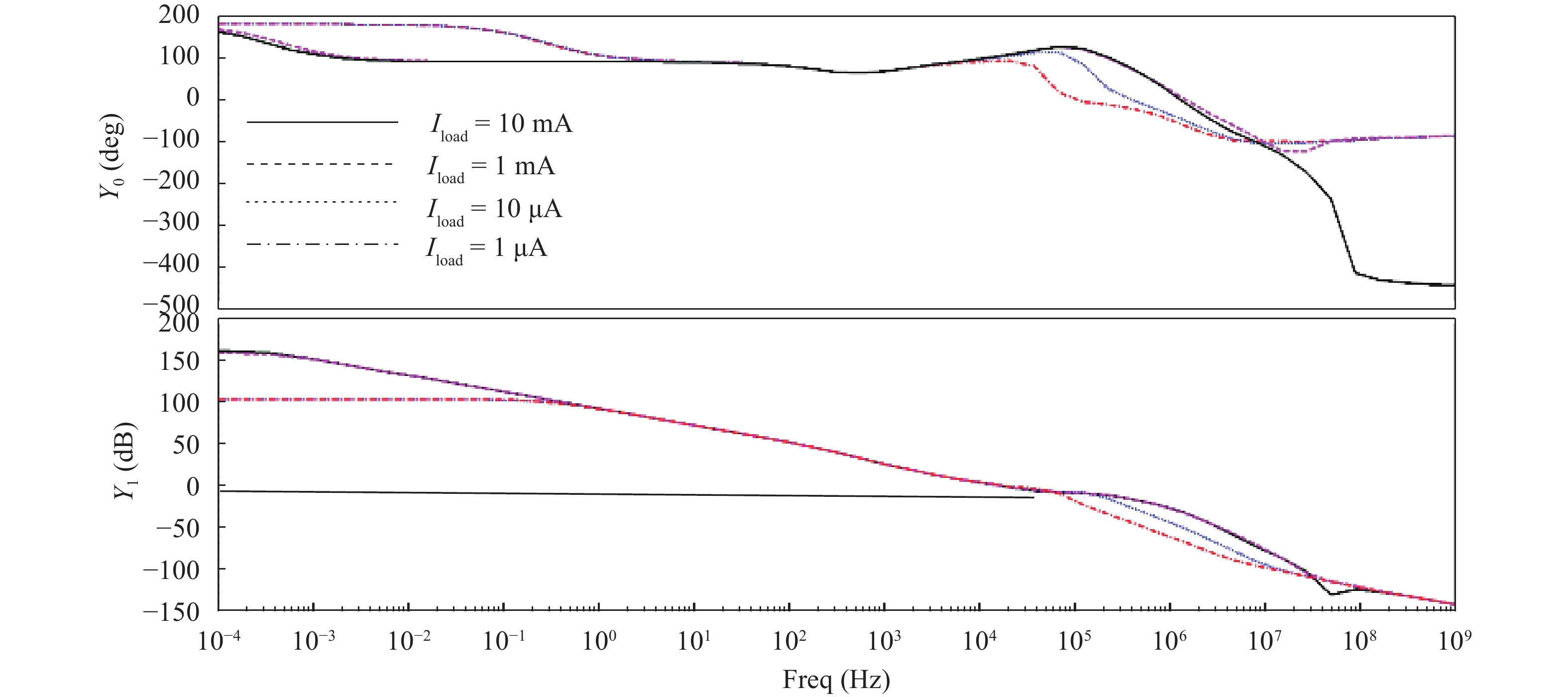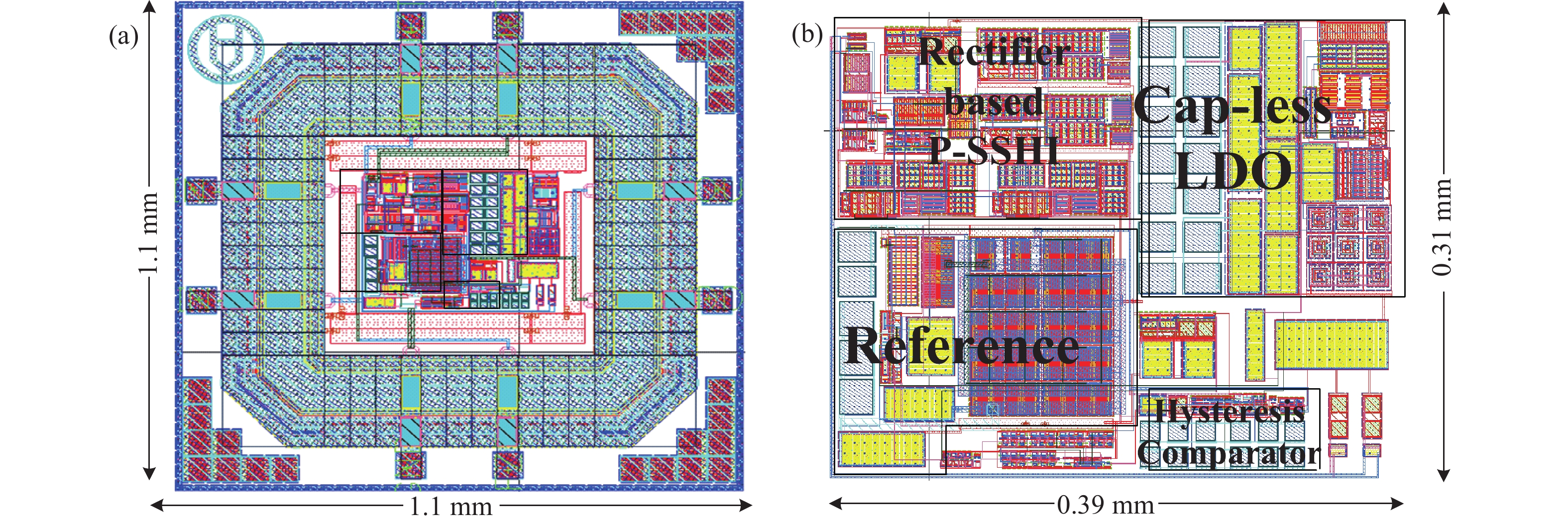| Citation: |
Lianxi Liu, Yanbo Pang, Wenzhi Yuan, Zhangming Zhu, Yintang Yang. A self-powered piezoelectric energy harvesting interface circuit with efficiency-enhanced P-SSHI rectifier[J]. Journal of Semiconductors, 2018, 39(4): 045002. doi: 10.1088/1674-4926/39/4/045002
****
L X Liu, Y B Pang, W Z Yuan, Z M Zhu, Y T Yang. A self-powered piezoelectric energy harvesting interface circuit with efficiency-enhanced P-SSHI rectifier[J]. J. Semicond., 2018, 39(4): 045002. doi: 10.1088/1674-4926/39/4/045002.
|
A self-powered piezoelectric energy harvesting interface circuit with efficiency-enhanced P-SSHI rectifier
DOI: 10.1088/1674-4926/39/4/045002
More Information
-
Abstract
The key to self-powered technique is initiative to harvest energy from the surrounding environment. Harvesting energy from an ambient vibration source utilizing piezoelectrics emerged as a popular method. Efficient interface circuits become the main limitations of existing energy harvesting techniques. In this paper, an interface circuit for piezoelectric energy harvesting is presented. An active full bridge rectifier is adopted to improve the power efficiency by reducing the conduction loss on the rectifying path. A parallel synchronized switch harvesting on inductor (P-SSHI) technique is used to improve the power extraction capability from piezoelectric harvester, thereby trying to reach the theoretical maximum output power. An intermittent power management unit (IPMU) and an output capacitor-less low drop regulator (LDO) are also introduced. Active diodes (AD) instead of traditional passive ones are used to reduce the voltage loss over the rectifier, which results in a good power efficiency. The IPMU with hysteresis comparator ensures the interface circuit has a large transient output power by limiting the output voltage ranges from 2.2 to 2 V. The design is fabricated in a SMIC 0.18 μm CMOS technology. Simulation results show that the flipping efficiency of the P-SSHI circuit is over 80% with an off-chip inductor value of 820 μH. The output power the proposed rectifier can obtain is 44.4 μW, which is 6.7× improvement compared to the maximum output power of a traditional rectifier. Both the active diodes and the P-SSHI help to improve the output power of the proposed rectifier. LDO outputs a voltage of 1.8 V with the maximum 90% power efficiency. The proposed P-SSHI rectifier interface circuit can be self-powered without the need for additional power supply.-
Keywords:
- self-powered,
- piezoelectric energy harvesting,
- P-SSHI,
- power management,
- active diode,
- LDO
-
References
[1] Hehn T, Hagedorn F, Maurath D, et al. A fully autonomous integrated interface circuit for piezoelectric harvesters. IEEE J Solid-State Circuits, 2012, 47(9): 2185 doi: 10.1109/JSSC.2012.2200530[2] Roundy S, Wright P, Rabaey J. Energy scavenging for wireless sensor networks with special focus on vibrations. Boston, MA: Kluwer Academic, 2003[3] Ottman G K, Hofmann H F, Bhatt A C, et al. Adaptive piezoelectric energy harvesting circuit for wireless remote power supply. IEEE Trans Power Electron, 2002, 17(5): 669 doi: 10.1109/TPEL.2002.802194[4] Le T T, Han J, Von Jouanne A, et al. Piezoelectric micro-power generation interface circuits. IEEE J Solid-State Circuits, 2006, 41(6): 1411 doi: 10.1109/JSSC.2006.874286[5] Kim H S, Kim J H, Kim J. A review of piezoelectric energy harvesting based on vibration. Int J Prec Eng Manufact, 2011, 12(6): 1129 doi: 10.1007/s12541-011-0151-3[6] Du S, Jia Y, Do C D, et al. An efficient SSHI interface with increased input range for piezoelectric energy harvesting under variable conditions. IEEE J Solid-State Circuits, 2016, 51: 2729 doi: 10.1109/JSSC.2016.2594943[7] Rao Y, Arnold D P. An input-powered vibrational energy harvesting interface circuit with zero standby power. IEEE Trans Power Electron, 2011, 26(12): 3524 doi: 10.1109/TPEL.2011.2162530[8] Do X D, Nguyen H H, Han S K, et al. A self-powered high-efficiency rectifier with automatic resetting of transducer capacitance in piezoelectric energy harvesting systems. IEEE Trans Very Large Scale Integr Syst, 2015, 23(3): 444 doi: 10.1109/TVLSI.2014.2312532[9] Shim M, Kim J, Jeong J, et al. Self-powered 30 μW to 10 mW piezoelectric energy harvesting system with 9.09 ms/V maximum power point tracking time. IEEE J Solid-State Circuits, 2015, 50(10): 2367 doi: 10.1109/JSSC.2015.2456880[10] Lu C, Tsui C Y, Ki W H. Vibration energy scavenging system with maximum power tracking for micropower applications. IEEE Trans Very Large Scale Integr Syst, 2011, 19(11): 2109 doi: 10.1109/TVLSI.2010.2069574[11] Romani A, Filippi M, Tartagni M. Micropower design of a fully autonomous energy harvesting circuit for arrays of piezoelectric transducers. IEEE Trans Power Electron, 2014, 29(2): 729 doi: 10.1109/TPEL.2013.2257856[12] Guyomar D, Badel A, Lefeuvre E, et al. Toward energy harvesting using active materials and conversion improvement by nonlinear processing. IEEE Trans Ultrason Ferroelectr Freq Control, 2005, 52(4): 584 doi: 10.1109/TUFFC.2005.1428041[13] Ramadass Y K, Chandrakasan A P. An efficient piezoelectric energy harvesting interface circuit using a bias-flip rectifier and shared inductor. IEEE J Solid-State Circuits, 2010, 45(1): 189 doi: 10.1109/JSSC.2009.2034442[14] Lu S, Boussaid F. A highly efficient P-SSHI rectifier for piezoelectric energy harvesting. IEEE Trans Power Electron, 2015, 30(10): 1 doi: 10.1109/TPEL.2015.2433775[15] Dicken J, Mitcheson P D, Stoianov I, et al. Power-extraction circuits for piezoelectric energy harvesters in miniature and low-power applications. IEEE Trans Power Electron, 2012, 27(11): 4514 doi: 10.1109/TPEL.2012.2192291[16] Aktakka E E, Najafi K. A micro inertial energy harvesting platform with self-supplied power management circuit for autonomous wireless sensor nodes. IEEE J Solid-State Circuits, 2014, 49(9): 2017 doi: 10.1109/JSSC.2014.2331953[17] Shi G, Xia Y, Ye Y, et al. An efficient self-powered synchronous electric charge extraction interface circuit for piezoelectric energy harvesting systems. J Intell Mater Syst Struct, 2016, 27(16): 2160 doi: 10.1177/1045389X15624796[18] Peters C, Handwerker J, Maurath D, et al. A sub-500 mV highly efficient active rectifier for energy harvesting applications. IEEE Trans Circuits Syst I, 2011, 58(7): 1542 doi: 10.1109/TCSI.2011.2157739[19] Aloulou R, Peslouan P O L D, Mnif H, et al. A power management system for energy harvesting and wireless sensor networks application based on a novel charge pump circuit. Int J Electron, 2016, 103(5): 150715[20] Andersen T M, Krismer F, Kolar J W, et al. A feedforward controlled on-chip switched-capacitor voltage regulator delivering 10 W in 32 nm SOI CMOS. Solid-State Circuits Conference, 2015: 1[21] Miller S, Maceachern L. A nanowatt bandgap voltage reference for ultra-low power applications. IEEE International Symposium on Circuits and Systems, 2006: 648[22] Andreou C M, Koudounas S, Georgiou J. A novel wide-temperature-range, 3.9 ppm/°C CMOS bandgap reference circuit. IEEE J Solid-State Circuits, 2012, 47(2): 574 doi: 10.1109/JSSC.2011.2173267[23] Peng S Y, Liu L H, Chang P K, et al. A power-efficient reconfigurable output-capacitor-less low-drop-out regulator for low-power analog sensing front-end. IEEE Trans Circuits Systems I, 2017, 64(6): 1318 doi: 10.1109/TCSI.2016.2561638[24] Chong S S, Chan P K. A 0.9 μA quiescent current output-capacitorless LDO regulator with adaptive power transistors in 65-nm CMOS. IEEE Trans Circuits Systems I, 2013, 60(4): 1072 doi: 10.1109/TCSI.2012.2215392[25] Do X D, Ko Y H, Nguyen H H, et al. An efficient parallel SSHI rectifier for piezoelectric energy scavenging systems. 13th International Conference on Advanced Communication Technology (ICACT), 2011: 1394[26] Lu S, Boussaid F, Law M K. Efficient parallel-SSHI interface circuit for piezoelectric energy harvesting. New Circuits and Systems Conference, 2013: 1[27] Sanchez D A, Leicht J, Jodka E, et al. A 4 μW-to-1 mW parallel-SSHI rectifier for piezoelectric energy harvesting of periodic and shock excitations with inductor sharing, cold start-up and up to 681% power extraction improvement. IEEE International Solid-State Circuits Conference, 2016: 366 -
Proportional views





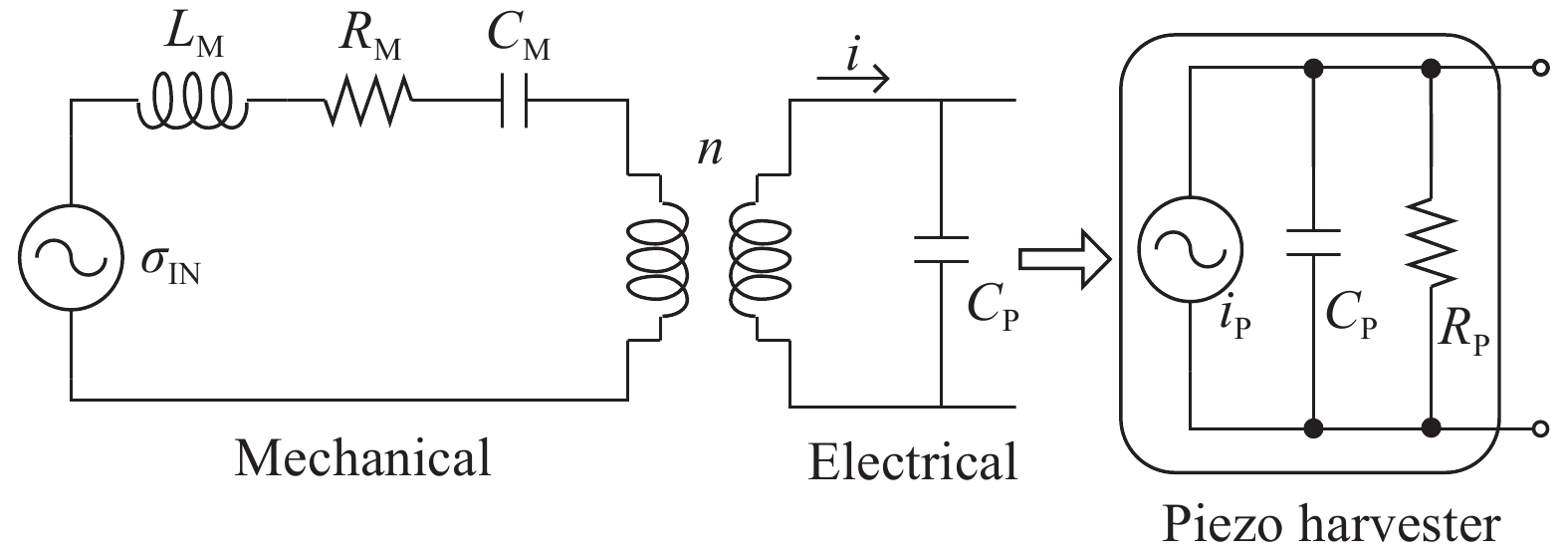
 DownLoad:
DownLoad:


